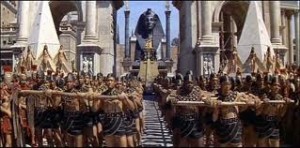The Houzz of Cleopatra
Written by Ernesto Santalla on December 11th, 2013 // Filed under Uncategorized
Recently, one of our projects, Rasteau, was featured on Houzz. Also recently, I saw Elizabeth Taylor’s Cleopatra for the first time. Hollywood created a fantasy and circumvented accuracy despite all that is know about Ancient Egypt, while at Rasteau we peeled back the layers of inaccuracy in the restoration and renovation of the in-town home in the wine country of France.
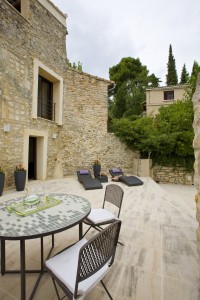
A view from the pool terrace to a neighboring home and landscape. It is much more than just “charming.”
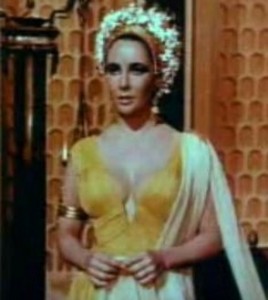
Elizabeth Taylor, arrestingly beautiful as Cleopatra in all-out Hollywood glamour, if not so much historically accurate attire.
At Rasteau, we found a complicated and somewhat bizarre structure and a very slim history of it, set within the context of a town overflowing with architectural presence. The Cleopatra filmmakers started with lots of history on the egyptian and roman cultures, a story line and actors who could fill movie theaters.
My clients at Rasteau, a European-American couple bought the in-town home from a German family who had last renovated the structure in the 1960’s. While the extent of that renovation was reasonably clear from their choice of decorative wallpapers, kitchen appliances and bathroom fixtures, the evolution of the structure before then was unknown to us, except we were certain that hidden chambers and lost treasures are discovered in films, but not here.
By contrast, what is known about classic Rome and Egypt during Cleopatra’s lifetime is vast, so the endless amount of architectural blasphemy of the film is inexcusable, even if the film was meant as a starring vehicle for Elizabeth Taylor at the height of her seductive powers. To say the set decorators took artistic license is a polite way of saying it’s an architectural cartoon.
Rasteau, on the other hand, has always been a working village focused on the production of local wines, un-adultered by commercialism and being so close to Vaison La Romaine, saved from being a tourist haven. The church is the only stand-alone structure in the town, perched at the top of the hill, even though it could be easily missed because it’s so modest. So the question in this renovation became, what is worth restoring? And therein lies the controversy.
Take for instance this fireplace.
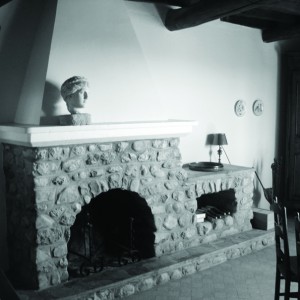
The stone size, shape and color did not match the building; this is the only instance of a roman style arch in the entire structure and the niche for firewood is superficial. At best, this feature needs architectural therapy. So now, here’s what we did
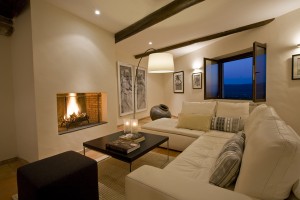
In architect speak it’s a “punched opening,” which sounds much more elegant than saying it’s a hole in the wall. It wasn’t an arbitrary solution however. See how the window is similar shape and proportion? They are both functional and in that regard, utilitarian, which I believe firmly is much better suited to this structure than something decorative.
Here’s another instance where we found something “charming.”
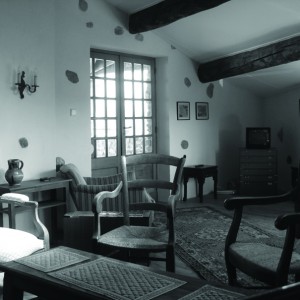
See those stones poking through the surface of the plaster? Totally fake. This was a sitting room, which we made the dining room
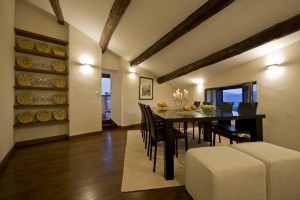
The doors became a passage to the new kitchen beyond. The shelves are new and again, functional and utilitarian. What makes it “charming” is what is displayed on it. The wall sconces are sleek and modern. They were selected to blend into the walls so the focus is on the space and not any particular object.
Back to Cleopatra. For her triumphal entrance to Rome, dressed in gold and silver, she arrives seated in front of a sphinx. If sphinxes are a symbol of power, they commemorate the deceased, so why on earth would she arrive in full glory with death lurking behind her? This one appears to be carved from a black stone. Did she have a tanker to transport it from Alexandria? Look at all the men it takes to pull it in.
